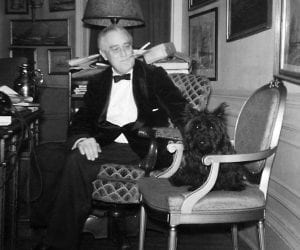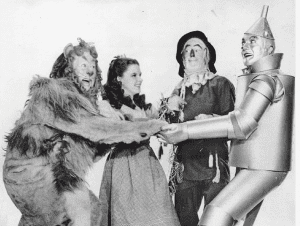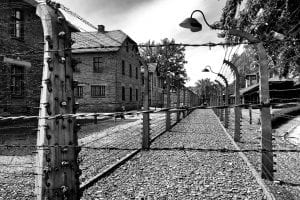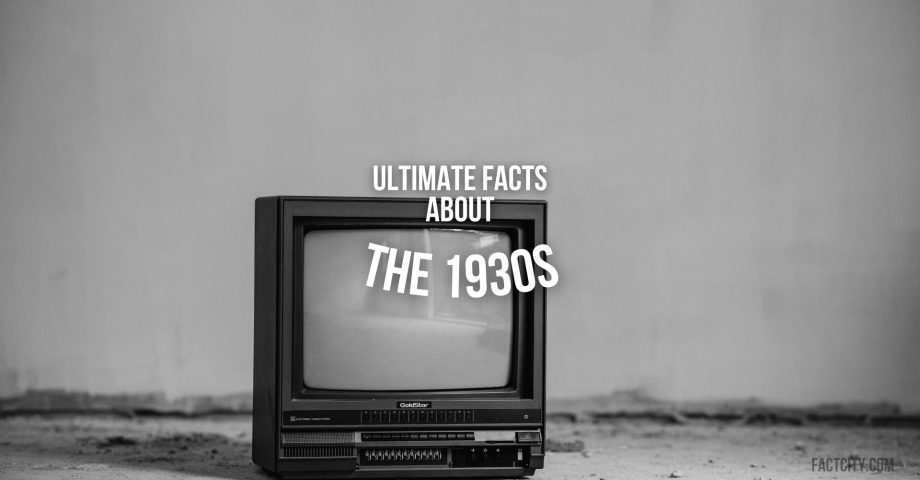The 1930s is a complex decade – marked by war and financial downturn, there were still some positives to be found!
However, the decade is probably most famous for the Great Depression, which was triggered by the Wall Street crash in late 1929. It was the longest and most severe economic downturn in modern history and marked a steep decline in industrial production, mass unemployment, a banking crisis, and sharp increases in rates of poverty and homelessness.
The 1930s also provided a strange phenomenon where bank robbers and murderers were thought of as celebrities. Were depression and crime the only symbols of the 1930s? Let’s go through these 56 fun facts about the 1930s and find out…
1. The US passed additional tax laws to affect imports from overseas.
In the USA, The Smoot-Hawley Tariff bill was passed, raising duties on imports. This bill was particularly popular with farmers within the US, as it helped to make the industry a little more competitive.
However, the upshot was that many countries chose to make American imports more expensive in return!
2. The biggest soccer tournament in the world took place for the first time.
The very first FIFA World Cup was held in Uruguay. Uruguay defeated Argentina to win the title, in a tournament that ran from July 13th to 30th, 1930.
Barring war and pandemic reasons, the soccer tournament has been held every four years as a tradition, becoming arguably the biggest international celebration of the sport.
3. Gandhi led a march for hundreds of miles, with followers close behind.
Mahatma Gandhi and his followers marched 200 miles to the salt beds of Jalalpur. This became known as the “Salt March,” and it took place with 50,000 people following the leader during his peaceful protest against salt taxation.
The march would take place over 24 days.

4. One of the most iconic cartoon characters of all time debuted in her first talking pictures.
The popular cartoon character “Betty Boop” made her debut in “Dizzy Dishes.” She was the creation of Max Fleischer and Grim Natwick, and she appeared in an astonishing 90 different features during the 1930s!
She’s made a few comebacks over the years – if you’re a fan of “Who Framed Roger Rabbit?,” she’s pretty easy to spot, for example!
5. Radio was the main form of entertainment across the decade.
For entertainment, children and families often listened to the radio during the Great Depression. Nearly 40% of families owned a radio.
However, that was soon to change – as television started sweeping into households across the 1930s. A little more on that below.
6. Banking crashes took a toll on lives, livelihoods, and mental health.
Banking panics in the early 1930s caused many banks to fail, decreasing the pool of money available for loans.
After the initial crash, there was a wave of suicides in New York’s financial district.
7. Elsewhere in the US, the landscape grew dry, too.
The US suffered the worst-ever drought in its history, leading to the Dust Bowl years. This was a period of around six years between 1930 and 1936, with drought unfolding as a result of a natural dust storm kicking up in Oklahoma.
Many people called the area home, and had done so since legislation passed in 1862 allowed people to settle on the land.
8. The US found its national anthem.
Francis Scott Key’s “Star-Spangled Banner” was officially named the United States national anthem.
Key was a poet for fun and a lawyer by trade! To this day, the song is still widely sung and recorded, and, naturally, it was inspired by the iconic US flag.
9. New York welcomed one of its most iconic buildings.
In 1931, the Empire State Building was completed. It’s an incredible 1,250 feet tall – but that’s not including the spire!
Including the very tip of the building, it’s actually around 1,454 feet tall – that’s almost five times the height of the Chrysler Building!

10. Spain made major changes to its governing system.
The Second Spanish Republic was created in 1931. This was a particularly important motion for the territory as it meant that freedom of speech was enshrined in law – and divorce was allowed across the country for the first time!
The Second Republic also granted women suffrage – they could finally vote in elections. However, Spain was yet to experience further hardship before the decade’s end.
11. Economies and employment rates suffered hard for several years.
The Great Depression influenced economies worldwide. More than 24.5% of the population were unemployed in the United States. Over 20% of the workforce were unemployed in the United Kingdom.
Canadian unemployment reached 27%. The German unemployment rate reached nearly 30%.
12. Female flight changed forever thanks to Earhart breaking records.
Amelia Earhart became the first female aviator to successfully fly solo across the Atlantic Ocean.
Earhart was a genuine icon – one who is remembered for being one of the most fearless and self-starting women in history. However, tragedy befell her – more on that further down.

13. Capone got caught – but not for what you think.
Notorious gangster Al Capone was convicted of income tax evasion – which landed him in prison for a total of 11 years! This was a record-breaking sentence for crimes of this nature at the time.
Capone was, of course, most infamous for running crime rackets in Chicago during Prohibition – and jurors taking part in the trial were protected out of fear they’d be targeted.
14. However, he did attempt to give back… occasionally.
Capone, in one of his sporadic attempts at public relations, opened a soup kitchen during the Great Depression. For millions, soup kitchens provided the only food they would see all day.
15. FDR took the helm as one of the US’ best-remembered Presidents.
On March 4th, 1933, Franklin D. Roosevelt became the 32nd President of the United States.
He’s well known for bringing in a raft of major reforms to USA taxation and internal policy, as well as for being the only US President in history to have served more than two terms in office.

16. Wiley Post added to Earhart’s flying firsts.
The first successful solo around-the-world flight was completed by Wiley Post. Post was also well known for developing early iterations of pressure suits – and he was also instrumental in discovering the jet stream!
17. A strange beast was spotted in Scotland.
The fabled “Loch Ness Monster” was spotted in Scotland for the first time in August 1933. There were even photographs taken of the supposed beast at the time!
The monster has supposedly been debunked as photos taken were allegedly of a bathing elephant from a traveling circus – but the myth remains!
18. The infamous origins of Volkswagen lie in the 1930s.
Adolf Hitler announced the state-sponsored “People’s Car” – “Volkswagen”. VW has long outlived its infamous origins and, naturally, has shaken its image once associated with Nazi Germany.

19. Prohibition finally ended in the US.
The 21st Amendment was passed, repealing the 18th Amendment ending the prohibition of alcohol. That meant the end of speakeasies as such – but the Jazz Age, which grew during the period, has never truly died out!
20. Warfare changed for good with the emergence of new weaponry.
The machine gun was first demonstrated by Japanese scientists during the 1930s – and in addition, British armorers developed the Bren gun, a light machine gun or LMG that would remain in use until the early 1990s. It’s safe to say that WWII brought with it the need for a whole new line of heavy artillery.
21. Disney introduced an iconic new character to their cast.
Disney introduced the character of “Donald Duck” in the animated short “The Little Wise Hen.” He’s since become an iconic member of Mickey Mouse’s crew, infamous for his short temper and bad luck.

22. Extremism loomed large thanks to global poverty.
Due to poverty around the world, political extremism, including Fascism, Nazism, and extreme Communism, gained followers.
The 1930s gave rise to infamous leaders such as Benito Mussolini, Adolf Hitler, and Josef Stalin, to name only three.
23. Dillinger fell foul of the law.
John Herbert Dillinger (Public Enemy Number One), the bank robber, died after a tense shoot-out with the FBI.
Dillinger was an infamous career criminal who had been imprisoned multiple times, only to escape at least twice, and who had robbed more than 20 banks.
24. Bonnie and Clyde were finally caught.
Bonnie Parker and Clyde Barrow, also infamous career criminals, died after a shoot-out with the FBI. Like Dillinger, the duo ran their own gang during the Great Depression, at a time when desperation for money was at an all-time high.

25. Alcatraz opened – and closed – its cell doors.
The Alcatraz Federal Penitentiary, also known as “The Rock”, opened near San Francisco and was used to hold some of the more dangerous and well-known US criminals.
26. Penguin started publishing their popular line of books.
In 1935, Penguin produced their first paperback books, bringing affordable modern litreature to the masses.
To this day, Penguin remains a trusted publisher of classic novels and children’s favourites, available both on library shelves and in ebook format.
27. The Hoover Dam officially opened during the 1930s.
The Boulder (Hoover) Dam was completed between 1931 and 1936, officially opening at the start of March in the latter year. It’s around 725 feet tall, and it’s depended upon to regulate water and provide power to nearby Nevada communities.
28. FDR’s employment movement took flight.
The Emergency Relief Appropriation Act created the WPA or Works Progress Administration to provide millions of jobs.
This was part of FDR’s New Deal, where he aimed to get people into work largely through construction and road labour, helping to strengthen the US infrastructure.
29. Social Security became a new standard in the US.
The United States Social Security Act was signed into law. It was another groundbreaking piece of legislation supported by FDR that ensured everyday people were protected against unemployment risks.
30. We started watching television for the first time.
The first public television broadcasts began in London, though the technology was in place from the late 1920s.
The 1930s gave rise to the first home TV sets, such as the popular Marconi 702, which used mirror lid technology. It was during this time that – alongside London’s first broadcast – the BBC, or British Broadcasting Corporation, came to prominence.

31. Babe Ruth played his last-ever baseball game.
Legendary player Babe Ruth retired from the sport of baseball after hitting his 714th home run. He played in an impressive 22 seasons, starting from his debut in 1914 through to his retirement in 1935.
Tragically, the Baltimore baseball legend would pass away in 1948, leaving behind one of the US’ greatest individual sporting legacies.
32. FDR continued to make big changes in US taxation.
President Roosevelt’s Revenue Act (Wealth Tax Act) began. This was introduced in 1935 to help derive more tax revenue from the highest earners in the nation. This proved unpopular with many wealthy people, as it meant they lost up to 75% of their incomes!
33. Judy Garland became an overnight sensation thanks to the Yellow Brick Road.
The beloved film starring Judy Garland “The Wizard of Oz” premiered in 1939, and made her a star overnight.
The musical fantasy was an adaptation of the popular L. Frank Baum book, published in 1900. Many look back at the film and feel it has slightly unnerving undertones now, though!

34. The King of England effectively resigned from his post.
In December 1936, King Edward VIII abdicated to marry American divorcee Wallis Simpson. This was a major event at the time – and the story of Edward and Wallis has made its way to the big and small screen over the years.
35. Gone With The Wind hit bookshelves, and would later become a huge movie hit.
Margaret Mitchell’s epic Civil War novel “Gone With the Wind” was published. It was adapted into a feature film by the end of the 1930s, becoming one of the biggest-selling movies of all time, even now, adjusted for inflation.
36. The controversial Berlin Olympics saw major wins for the US.
Track and field superstar Jesse Owens won four Gold medals for the US at the Berlin Olympics amid the controversy of Adolf Hitler’s Nazi regime overseeing the event.
Owens was an incredible athlete who excelled in sprinting and long jumps, with many regarding him as possibly the most famous track star of all time.
37. Spain was plunged into a three-year conflict.
The Spanish Civil War began during July 1936 and did not end until 1939. It was a conflict that took place between the Nationalists and Royalists, kick-started due to a failed coup to overthrow the existing regime.
38. England crowned a new king.
Prince Albert, the Duke of York, became King George VI of England in 1936. He was an important figure during WWII, opting to reside in Buckingham Palace even when it was under threat of bombing – it was attacked nine times.
George VI would remain king until his passing in 1952, leading to his daughter, Queen Elizabeth, taking the throne until 2022.
39. The Hindenburg disaster seized headlines everywhere.
The German airship Hindenburg burst into flames while attempting to moor at Lakehurst, New Jersey. The disaster tragically killed 36 people, with 63 others on board barely escaping with their lives.

40. Amelia Earhart tragically disappeared.
Amelia Mary Earhart disappeared over the Pacific Ocean during a circumnavigation flight attempt. She disappeared with her navigator, Fred Noonan, in 1937 – and no one’s ever truly sure what happened to the duo.
41. Britain revealed its emergency helpline service to support people in need.
The United Kingdom’s “999” Emergency Telephone Service began operations. The British equivalent of the 911 service, it’s thought that up to 35 million calls are made to British emergency services every year.
42. Japan made huge gains through invasions across Asia.
Japan invaded China and seized Peking, Tientsin, Nanjing, Shanghai, and Hangchow. Their skirmishes formed part of the Second Sino-Japanese War, with China having fallen to Japan’s attacks despite incredible resistance.

43. Chicago played host to a horrific massacre on a devastating date.
The Memorial Day Massacre took place in Chicago in May 1937. The event revolved around the killing of ten unarmed protesters in the city by armed police – as demonstrators took part in the Little Steel strike.
44. Seabiscuit became a household name for racing fans everywhere.
Seabiscuit beat War Admiral in the “Race of the Century” in 1937. He was a thoroughbred born in 1933 who lived to 1947, winning 33 of the 89 races he took part in – an incredible record!
45. Orson Welles tricked a generation of radio listeners.
Orson Welles’ radio adaptation of The War of the Worlds was broadcast – and this was notable because the story, about an alien invasion, tricked many people into believing it was actually happening! It was later adapted into a musical by Jeff Wayne.
46. Howard Hughes added to the list of aviation records from the decade.
Aviator Howard Hughes flew around the world in 3 days and 19 hours, setting a new record. Hughes was a multi-millionaire philanthropist and passionate aviation expert who also made films and invested in businesses.
47. FDR strived to make labour equal and pay fair.
The Fair Labour Standards Act (Wages and Hours Bill) was passed in 1938, enabling US citizens to earn a minimum wage for the first time and prohibiting children from working in “oppressive” conditions. It was another of FDR’s more popular reforms to US labour laws.
48. However, Hitler took a firm grip of Germany.
Germany began its persecution of Jews during the 1930s, leading to infamous “concentration camps,” where Jewish people were rounded up, tortured, and killed. The atrocities helped to fuel the Second World War, or WWII, where the Allied forces fought to end Hitler and the Nazis’ horrific regime.

49. War broke out at the decade’s end.
On September 1st, 1939, Germany attacked Poland starting World War II. This is thought to be the major instigating point for the conflict and for bringing in Allied attacks – and, thankfully, Nazi Germany and the Axis powers would eventually fall by the mid-1940s.
50. We said goodbye to another baseball great.
Lou Gehrig retired from Major League Baseball after being diagnosed with ALS. He was a seasoned baseman, having played in 17 seasons across Major League Baseball. He was a major draw for the New York Yankees, and was known as the Iron Horse.
51. The Man of Steel first appeared in a comic that’s now worth a lot of money.
The very first “Superman” comic was issued by Action Comics in 1938. To this day, a copy of the comic book is likely to command more than $3 million at auction!
52. Nuke planning was starting to emerge.
Physicists Albert Einstein and Leo Szilard sent a letter to President Roosevelt urging the United States to invest time and money into the secret development of nuclear weapons before Germany developed the technology first.
53. Spanish conflicts finally ended – albeit with Franco in charge.
Dictator Francisco Franco conquered Madrid, ending the Spanish Civil War. Franco was an oppressive ruler who would dominate Spain until his death in the mid-1970s, when rule was eventually passed back to the monarchy.
54. And that wasn’t the end of invasions on the continent.
Russia invaded Finland, specifically starting what became known as the Winter War. This conflict saw invaders attempt to claim territories within the Karelian Isthmus. Finland refused to bow to Russia’s offence, with the invaders officially striking in November 1939.

55. New York welcomed its first fair.
The World’s Fair opened in New York in 1939, with over 44 million people taking in exhibits showing off the “world of tomorrow.” The exhibits didn’t get everything right, but they were still fascinating to behold!
56. Economies were finally on the mend – but the war was partly to thank.
The Great Depression was technically over by 1933, meaning that economies had started to recover, however most did not experience full recovery until the late 1930s or early 1940s. It’s thought a world being forced into war helped to boost production and thus heal the economic downturn.
FAQs About the 1930s
What were the 1930s famous for?
Among other things, the 1930s were famous for ushering in Hollywood’s Golden Age - and TV broadcasts started emerging, too!
What types of music were popular in the 1930s?
Music popular in the 1930s included swing and big band - a bit different from modern tastes!
What caused the Great Depression of the 1930s?
It’s thought that the Great Depression of the 30s was largely caused by reparations and financial repair after World War I brought about the Great Depression.
Do you know any fun facts about the 1930s? Share them in the comments below!











